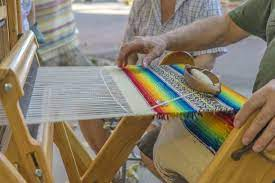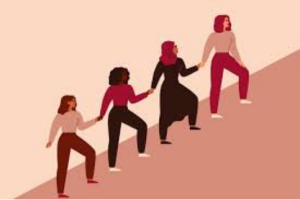
The Historic Route of Ethiopia allows a tourist to step back in time and discover thousands of years of history, legend, and lore. The tourist can explore the Historic Route of Ethiopia as well as experience Ethiopian Orthodox Christmas, a colorful and ancient celebration around the Rock-hewn Churches of Lalibela.
Christmas is one of the greatest and most colorful festivals on the Ethiopian calendar. At Lalibela, it is celebrated with greater devotion, chanting, dancing, and singing around the rock-hewn churches that were built more than 800 years ago.
Most of the pilgrims reach Lalibela from far off hamlets and inaccessible valleys, walking on their bare feet for days, weeks, and even months to share the blessing on Christmas day. Although Ethiopian Christmas is on January 7, there will be different ceremonies held around the rock-hewn churches starting from the night of January 4th. This is an ancient Christian tradition that has remained unchanged over the years. Witnessing this event, you feel like you are transported centuries back in time.
Lalibela is a nondescript town of a few dusty streets atop a rugged mountain some 200 miles north of Addis Ababa. But its 11 monolithic churches-carved out of the red volcanic stone in the 12th century and now a World Heritage Site-are thronged by pilgrims every Christmas. Because of differences between Western and Ethiopian calendars and traditions, Ethiopians celebrate that holiday on what Westerners know as January 7.
The altitude-8,600 feet above sea level-and the crowds took your breath away: the tunnels and passageways connecting the churches were crammed with devotees bumping into and even shoving one another in their rush to get from one church to another. Lalibela has 20,000 residents, and “more than 50,000 pilgrims come for Christmas. As you see, they burst the town at its seams.
According to church tradition, it was two shipwrecked Christian boys who introduced the faith to Ethiopia in the fourth century; they worked as slaves in the royal court but eventually became advisers to King Ezana, who spread Christianity among his people. Abba Gebre Yesus, the bishop of Lalibela, told that Lalibela became a holy city after the capture of Jerusalem by Muslim forces in 1187; since Ethiopian Christian pilgrims could no longer go there, the reigning king—Lalibela—declared the town to be a new Jerusalem.
Bete Medhane Alem is the world’s largest monolithic church, 63 feet high by 45 feet wide and 24 feet deep. It resembles an ancient Greek temple, but Ethiopia’s Jewish roots are reflected in the Star of David cut into the ceiling. “Thousands of workmen toiled here by day to carve out the church, and by night when they slept a host of angels continued the work,” a young priest who gave his name as Arch Deacon Yonas Sisay told. The angels, tradition says, dug three times the amount of the men.
After the stroke of midnight on January 7, I attended Christmas Mass at Bet Maryam, the church dedicated to the Virgin Mary. One of its frescoes is of the Star of David; close by is another depicting the flight by Mary, Joseph and Jesus into Egypt. That night, pilgrims jammed the church shoulder to shoulder and thronged the surrounding hills. To begin the Mass, priests chanted and rattled sistras, palm-size instruments from Old Testament times, and the celebration continued through the night.
At sunrise, the church emptied. More than 100 priests climbed the rocky steps to the rim of the pit overlooking the church and formed a line that snaked to the very edge of the drop. They wore white turbans, carried golden scarves and had red sashes stitched into the hems of their white robes. Several deacons began beating large drums, and the priests began to sway in unison, rattling their sistras, then crouching in a wavy line to the beat and rising again—King David’s dance, the last of the Christmas ceremonies.
In the courtyard below, two dozen priests formed a tight circle with two drummers in the center and began chanting a hymn to the priests above, who responded in kind. “The courtyard priests represent the world’s people, and the priests high above represent the angels,” a priest told me. “Their singing is a symbol of the unity between heaven and earth.” On they went for two hours, their movements and voices swelling in intensity. Many of those high above slipped into ecstatic trances, closing their eyes as they swayed. I feared that one of them—or more—would fall. But none did.
The Ethiopian Herald January 9, 2020
BY STAFF REPORTER




